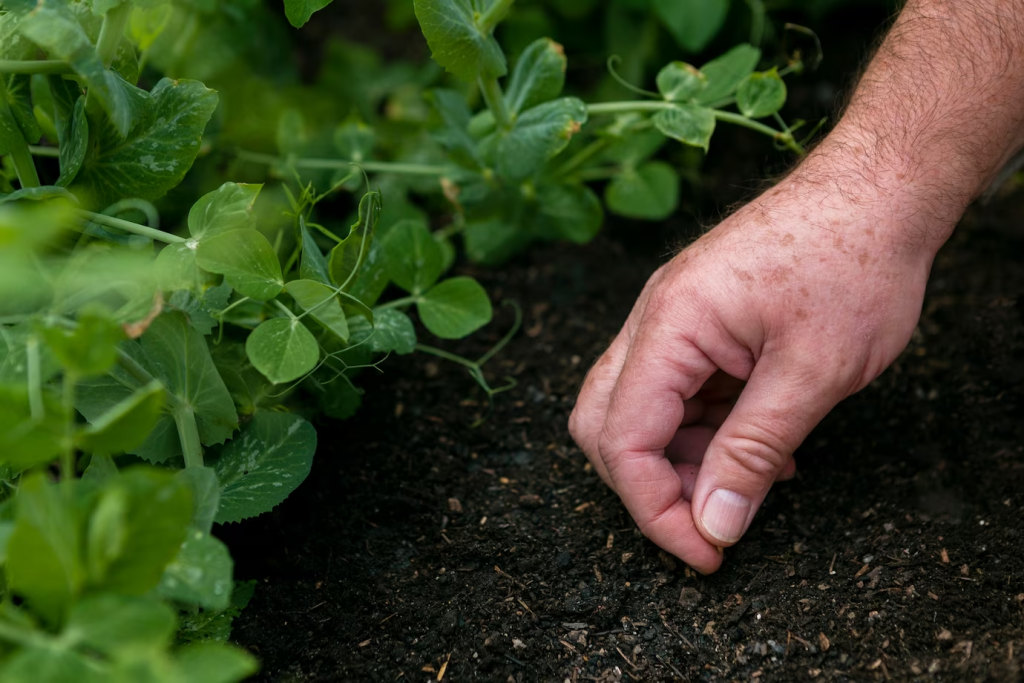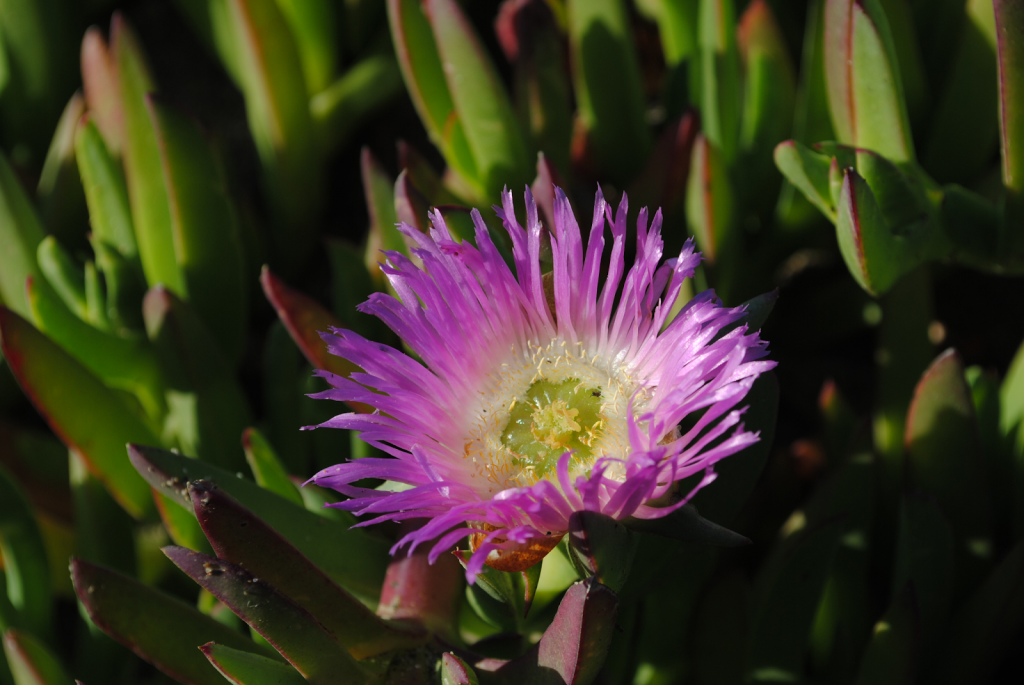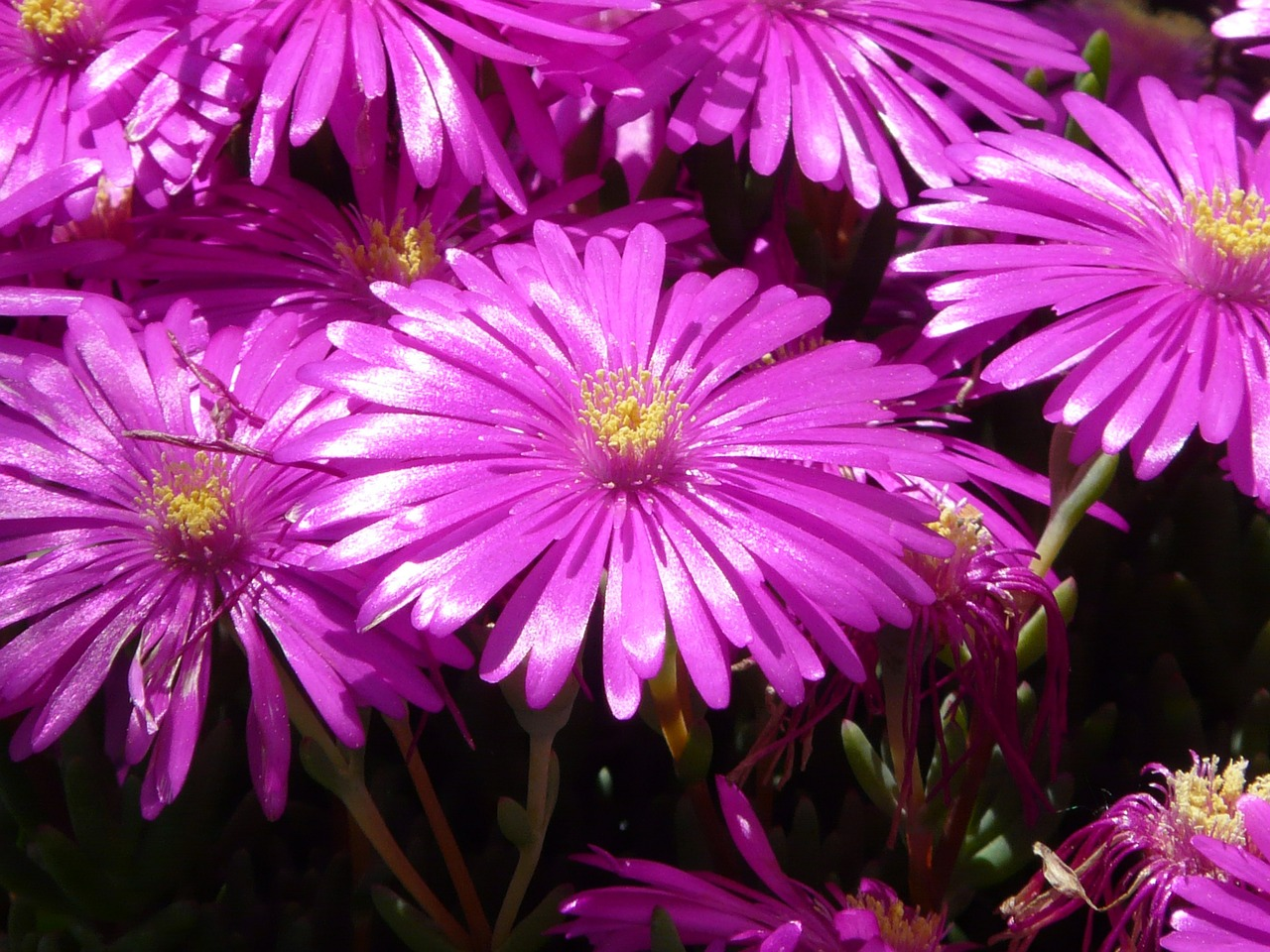The ice plant (Delosperma) is a hardy succulent that has gained popularity as a ground cover option.
With its low-maintenance requirements and abundance of colorful flowers, it is a great plant to consider for filling those bare patches in your garden and adding a touch of charm to it.
Its adaptive properties make the ice plant suitable for different soil conditions. Because of that, incorporating this plant into your garden design is as straightforward as it gets.
In this article, we explore the fundamental aspects of growing and caring for ice plant ground cover. We also share valuable tips to help these stunning plants flourish in your outdoor space.
Whether you have prior experience with ice plants or are new to this delightful ground cover option, our advice will help you ensure their thriving presence in your garden.
Choosing the Right Location
Ice plants prefer full sun exposure, making them suitable for areas that receive at least six hours of direct sunlight per day. They can tolerate partial shade, but their flowering may be reduced.
Another thing to consider is soil drainage.
Ice plants need well-drained soil for optimal growth. They struggle to survive in clay or poorly draining soils and may even die if exposed to standing water for extended periods.
Consequently, avoid planting these flowers at the foot of slopes or in low-lying parts of the garden where water tends to pool.
Instead, plant them on a hillside or slope where water will drain rapidly after a storm. Raised beds or mounds are also excellent choices for growing ice plants successfully.
The table below offers additional information that might help you select the best spot for those flowers:
| Water | Light | Colors | Special Features |
| Low water needs | Full sun exposure | – Pink- Purple- Yellow | – Attracts butterflies- Deer/rabbit resistant- Ground cover |
Soil Preparation

Before planting your ice plant, it’s essential to prepare the soil to provide an optimal environment for growth.
Although these plants are low-maintenance and relatively easy to grow, they can become temperamental if their growing conditions are nonoptimal.
Generally, ice plants will thrive in well-draining soil with a slightly acidic to neutral pH (6.0-7.0).
If you want your flowers to thrive, follow these steps:
- To improve the soil’s drainage, mix in some organic matter, such as compost or aged manure, along with coarse sand or grit to ensure proper water flow.
- Adding a top layer of gravel or small stones will further promote drainage and prevent excessive water retention around the roots.
The next thing to do is to take note of your ice plant variety’s recommended hardiness zones, especially if you intend to grow it as a perennial ground cover.
Usually, ice plants are grown as annuals in Zones 4 and 5. These colder climates pose challenges for the plant to thrive perennially.
On the other hand, in Zones 6 through 9, the ice plant has a better chance of thriving as a perennial due to milder temperatures.
If you live in a colder region but still want to grow ice plants as perennials, you can take a few measures to improve their chances of survival. Here’s a short list of tips:
- Provide your flowers with ample mulch, which offers insulation and additional protection from harsh weather conditions.
- Cease feeding and watering of ice plants in the fall season. This step helps reduce the likelihood of waterlogging in the soil due to lower evaporation rates.
Planting and Propagation

Ice plants can be propagated by division or grown from seeds or cuttings.
The easiest method is by division, which involves separating an established clump into smaller sections and planting each section separately.
You may notice stems expanding and taking root in the soil away from the original plant. These newly rooted offshoots are perfect candidates for transplantation.
To encourage the growth of a new plant from these offshoots, simply snip the connecting stem. Then, carefully dig up the new growth and transfer it to another garden area.
Spring is the ideal time to divide a mature ice plant. To do so, follow these steps:
- Moisten the soil, as doing so will allow the roots to slide out more easily.
- Dig up the entire plant. Take care to minimize any damage to the roots.
- With a sharp spade, divide the plant at the roots, ensuring that each section has an adequate amount of well-developed roots.
- Choose a suitable location for every piece of the divided plant and place them at the same depth as the original one was growing.
- Gently pat down the soil around each transplant, making sure it is secure yet not compacted.
- Finally, lightly water the soil around your newly planted ice plants to help them settle in their new environment.
If you opt for seeds or cuttings, start the process indoors and move the plants outside once they have developed a healthy root system and have begun to sprout new growth.
Plant individual ice plants approximately 15-18 inches apart for optimal ground cover growth. This way, you’ll encourage a dense, attractive carpet-like effect without overcrowding the plants.
- In colder regions, it’s essential to get your ice plants in the ground by mid-summer, allowing their root systems to establish before winter arrives.
- For those situated in hotter climates, planting ice plants during the fall season is the best course of action. It ensures they can handle the higher temperatures and flourish in your garden.
Watering and Fertilizing

Ice plants are known for their exceptional drought tolerance, requiring minimal watering to thrive. Because of that, overwatering them can be detrimental to their overall health.
Water your plants only when the top few inches of soil feel dry to the touch.
When assessing the watering needs of this low-maintenance ground cover, consider the rainfall patterns in your area and the impact of your region’s climate.
In general, ice plants may only need watering twice a month, especially if rainfall is consistent and adequate.
During periods of extreme heat or extended dry spells, you might need to increase the watering frequency to ensure the plants remain healthy and vibrant.
As the fall season approaches, reduce watering and allow ice plants to dry out gradually. This process helps them enter a natural dormancy period, preparing them for the colder winter months.
Failing to provide an appropriate dormancy period for ice plants may lead to weaker resilience against harsh winter conditions. As a result, these plants could succumb to extreme temperatures and result in a less thriving ground cover come springtime.
Fertilizing ice plants is generally unnecessary as they can survive in nutrient-poor soils. However, if you decide to use fertilizer, choose a balanced slow-release formula and apply it only during the active growing season.
Pruning and Maintenance
Pruning is not a concern for ice plants, as they typically do not require it. Still, to keep your ice plant ground cover looking tidy and encourage further growth, you can try pruning periodically.
Trim back any dead foliage or spent flowers in early spring to stimulate new growth. Removing dead leaves will decrease the risk of pests and diseases and improve air circulation around the plant.
As mentioned above, in regions where ice plants may experience dieback during winter due to harsher conditions, consider applying a light layer of mulch to help insulate the roots. However, avoid using thick mulch layers since too much moisture retention can harm the plants.
It’s also important to note that, although beautiful, ice plants are not meant for human or animal consumption. Do not ingest these vibrant ground covers; exercise caution when planting them in areas where pets or children frequent.
The Bottom Line
The ice plant’s low-maintenance nature and vibrant, colorful flowers make it a perfect option for filling gaps in your garden landscape.
By selecting an appropriate location, preparing the soil well, and following simple care tips, you can enjoy the charm and beauty of this versatile ground cover plant.
Since ice plants are so easy to care for, you won’t need to worry about dedicating too much time to nurturing them. Just provide occasional watering during extended dry spells, and trim back any dead or overgrown parts as needed.
Also, remember that ice plants are not limited to ground cover alone. They make excellent border plants, bringing vibrant pops of color to any garden edge.
FAQ
What is an ice plant?
Ice plant (Delosperma) is a hardy succulent ground cover known for its low-maintenance nature and colorful flowers. It is commonly used in gardens to fill empty spaces and add visual interest.
But the beauty of this plant isn’t just skin deep, as its durability is a standout aspect too. It can thrive in various conditions and requires minimal care.
In fact, one could describe it as having a set-it-and-forget-it quality.
This factor makes it ideal for both experienced gardeners looking for a low-hassle addition and beginners hoping to dip their toes into the world of gardening.
Where should I plant ice plants in my garden?
Ice plants prefer full sun exposure. Choose a location that receives at least six hours of direct sunlight daily.
Another aspect to consider is the type of soil. Ice plants need well-draining soil to flourish.
Avoid areas in your garden that collect water or stay consistently moist. Instead, opt for spots with loose, sandy soil or rocky terrain.
How can I propagate ice plants?
Propagating ice plants can be both an enjoyable and rewarding experience for any gardening enthusiast. There are three main methods to propagate these hardy, colorful plants: by division, seeds, or cuttings.
Division is the easiest method, which involves separating an established clump into smaller sections and planting each section separately. Each newly-formed division should have a good amount of roots and top growth to ensure its survival.
Seeds are also a viable option when it comes to propagating ice plants. To do so, one should start by collecting seeds from the mature plants once they have flowered.
Finally, you can choose to propagate ice plants through cuttings. It involves taking small sections of the plant, usually around three inches long, and removing any lower leaves on those sections. Afterward, allow the cut ends to dry and callous over for a day or two before planting them in potting mix or well-draining soil.
How often should I water my ice plants?
When it comes to watering ice plants, the key is finding the right balance.
Water your ice plants only when the top few inches of soil feel dry to the touch. They are drought-tolerant, so overwatering can be harmful.
During the colder months, adjusting your watering schedule is crucial since ice plants enter a dormant period in winter. It means they will require even less water than usual.
Keep an eye on the soil and adjust your watering accordingly — it’s better to err on the side of caution.
Do ice plants need fertilizer?
Fertilizing ice plants is optional since they can survive in nutrient-poor soils. If you choose to fertilize, apply a balanced slow-release formula during the active growing season.
It’s also best not to over-fertilize, as too many nutrients can be harmful to these low-maintenance plants.
How do I prune and maintain my ice plant ground cover?
Maintaining a thriving ice plant ground cover can be easy if you follow some simple steps.
- Check your plants for any brown or dried-out leaves.
- Carefully trim them away with garden shears or small scissors, ensuring you do not damage the surrounding healthy foliage.
- Remove spent flowers in early spring to stimulate new growth and improve air circulation.
- In regions with harsh winters, consider applying a light layer of mulch to insulate the roots, but avoid thick layers as they can retain too much moisture.
Are ice plants invasive?
Ice plants originate from Africa, but they have become popular in many parts of the world due to their colorful flowers and unique succulent-like appearance. The issue arises when certain species of ice plants are introduced into new environments where they become invasive.
In such a case, they spread rapidly, displacing native plants and disrupting local ecosystems.
Before you introduce ice plants to your garden, consult with your local extension office or horticultural society. They can provide valuable information on which varieties of ice plants are appropriate for your area — or even if they’re allowed at all.
Are ice plants deer-resistant?
Ice plants are generally considered deer-resistant, making them a desirable option for gardeners who struggle with deer browsing on their plants.
However, no plant is entirely immune to deer feeding, so monitor your garden and take action if necessary.
While ice plants tend to be on the lower end of a deer’s menu, there is still a possibility they might nibble on them if other more preferred options aren’t available.
Was it helpful?

Enamored with the world of golf Jack pursued a degree in Golf Course Management at THE Ohio State University. This career path allowed him to work on some of the highest profile golf courses in the country! Due to the pandemic, Jack began Inside The Yard as a side hustle that quickly became his main hustle. Since starting the company, Jack has relocated to a homestead in Central Arkansas where he and his wife raise cattle and two little girls.




